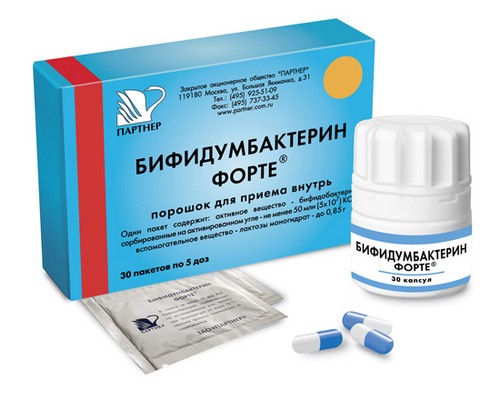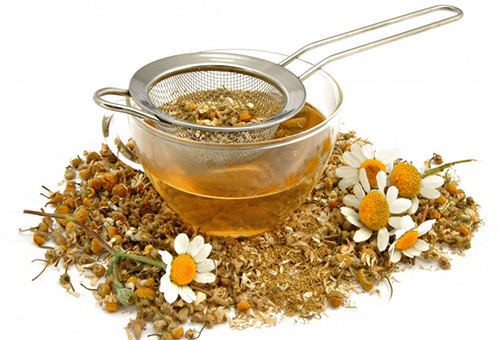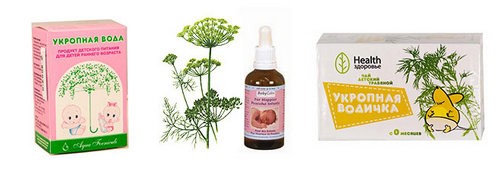Intestinal colic in newborns is accompanied by a slight bloating and tension of the walls of the abdominal cavity. Stress further enhances muscle spasm and pain.
Therefore, the first cure for colic is relaxation.
In the literal translation from Greek, “colicos” means pain in the colon. The cause of colic is gas in the digestive tract. Despite the fact that gaziki are formed mainly in the intestinal cavity, pain can spread throughout the stomach.
The reasons that contribute to the formation of colic are several:
- Lack of maturity of the intestinal flora, lack of enzymes and bacteria for digesting dairy foods. That is a banal dysbiosis. With incomplete digestion, the remains of milk roam in the intestines and form gases. In an adult, gas formation is not a problem. Intestinal gases exit along with feces. In a newborn baby, the digestive organs are small in size. Therefore, when the formed gases exit, pain or discomfort occurs.
- Overfeeding the baby – if the baby eats too much, the milk does not have time to be completely processed. Undigested food causes allergies and gas formation.
- The use of lactating mother foods that enhance the formation of gases. These processes primarily occur in the intestines of women, and then in the intestines of the baby. As a rule, vegetables and fruits (cabbage, corn, peas, beans and other legumes), as well as foreign proteins (whole cow’s milk, beef or pork, egg white and egg yolk) increase gas emissions.
- Also, sources of gas formation can be too fatty foods – pork, lard, nuts. They form a high fat content of milk and complicate its assimilation, form the conditions for fermentation of milk food in the intestine and gas formation.
- Ingestion of air during feeding (although this factor is controversial, as a rule, most of the air comes out after eating with belching).
- BCG – provokes the appearance of intestinal colic 2 weeks after inoculation of tuberculin.

When do colic begin in a newborn
In the first days of life, babies do not experience pain and do not show bouts of loud crying and anxiety. When does colic begin in a newborn?
In most newborns, colic appears in the second or third week after birth.
Until this time, their nutrition consists of colostrum, which is replaced by milk only 4-5 days after birth. For the first few days, primordial cal – meconium leaves the intestine (it has accumulated in the intestinal cavity during intrauterine development and nutrition). Therefore, earlier than after 3-4 days, intestinal colic does not occur.
As soon as the infant switches to full-fledged milk, new demands are made on his intestinal flora. It is necessary to completely digest food and assimilate it. If the composition of the microflora does not have time to gain the necessary bacteria, dairy food is not fully absorbed, intestinal colic occurs.
When are colic in newborns
How many months can colic in newborns last? It depends on individual characteristics. There is a general trend – in most newborns, colic ends after the 3rd or 4th month of life. However, with proper nutrition and the establishment of microflora, colic can disappear earlier, and with an incorrect attitude to the nutrition of mother and baby, it can drag on for up to six months.
In any case, if you take active measures, control the menu of a nursing woman, give the baby bifidobacteria and lactobacilli, allow it to move actively, the manifestations of colic will bother less, pass sooner.
Symptoms of the manifestation and behavior of the baby
Symptoms of colic in a newborn can be confused with the unhealthy baby, a sudden illness:
- Attacks of loud sharp piercing crying.
- The baby presses the legs to the stomach, pulls them (so he tries to reduce pain).
- Tense, hard tummy.
- The cry and tension of the anterior abdominal wall decreases after the child farts.

Often a child screams for so long and exhaustingly that the whole family is haunted by sleepless nights. What to do if the newborn has gas or colic? How to help a newborn baby?
Treatment of colic and gas in newborns with drugs
The treatment of colic in newborns at home is aimed at the following:
- Reduce gas production.
- Improve digestion.
- Form a normal composition of the flora of internal organs.
- Provide the baby with digestive enzymes.
- Symptomatic: reduce soreness if colic has already occurred.
Probiotics – Build Intestinal Flora
Probiotics are the first cure for colic in newborns. They are necessary to establish the intestinal flora, its colonization of the necessary bacteria. They provide complete digestion of food. Healthy intestinal flora controls the absence of allergies, determines weight gain and physical development.
- Bifidumbacterin (in capsules) – the preparation contains exclusively lyophilized bifidobacteria (dried by cold under vacuum) and lactose. Each bag contains 107 bacteria. The absence of other components allows you to give the drug to the baby from the first days of life.
- Acipol is live acidophilus bacteria (lactobacilli) and kefir fungus. It is supplied in capsules, which are opened and diluted in a small amount of water, or poured onto the baby’s tongue before feeding. For a newborn, the dose of acipol, which must be given at a time, is 1/8 capsule.

In addition to these safe drugs, the pharmacy industry produces a number of other probiotics that contain not only active bacteria, but also food additives (stabilizers, disintegrants, colorants and flavorings).
These drugs are actively advertised on the television and Internet, but the appropriateness of their use in children in the first months of life is debatable.
Here are some examples of what may be contained in complex probiotics:
- Bifiform is a preparation that includes lactic acid starter and lactulose (these are bacteria), as well as gum (stabilizer, increases the shelf life of the drug) and E 572 magnesium stearate (used to give the powder uniformity, as well as lubricating equipment in the manufacture of the medicine).
- Linex is a complex preparation, which includes lactic acid bacteria (lacto- and bifido-), lactose, starch (for powder uniformity), dextrin (this is modified starch, stabilizer) and magnesium stearate.
- Hilak Forte – in addition to beneficial bacteria, it contains sodium hydrogen phosphates (laxative), phosphoric acid (in large doses inhibits mental abilities and causes diarrhea).

Enzymes – provide digestion of food
Another medicine for colic in newborns is enzymes – substances that, together with bacteria, provide digestion of food. Their lack also complicates metabolism (the breakdown of complex carbohydrates and proteins from food), and causes gas formation.
The following enzymes are most important for the baby’s digestion: amylase, protease, lipase.
For the absorption of milk sugar, the enzyme lactase is necessary. With its deficiency, lactose deficiency occurs, incomplete digestibility of carbohydrates from mother’s milk, intolerance to milk sugar. However, milk sugar itself does not form gases, therefore, does not affect the formation of colic, even with lactose deficiency.
What enzymatic medicines for colic in the tummy of newborns does medicine recommend using?
- Mezim – contains digestive enzymes from the pig pancreas, the enzyme trypsin, simethicone (about it – the next chapter on drugs), as well as talc, magnesium stearate, titanium dioxide (for the pure white color of the drug).
- Creon – contains the enzyme pancreatin, as well as macrogol (laxative), triethyl citrate (foaming agent), iron oxide, titanium dioxide, sodium sulfate.
- Lactazar is the safest enzyme preparation, contains the enzyme lactase and carbohydrate maltodextrin (enhanced carbohydrate nutrition), in addition to them there is only a gelatin shell that the infant does not consume (the capsule is opened and some of the contents are poured into water or mouth).
Drugs with simethicone – remove gases from the intestines
The modern list of medicines for colic in newborns is continued with preparations with simethicone. This substance is a compound of silicon dioxide and dimethylsiloxane, which has a carminative effect. Physiologically, Simecton acts as follows: it divides large gas bubbles in the intestine into smaller ones. Those, in turn, are easily excreted with peristalsis (reduction of the walls) of the intestine.
This group of drugs has established itself as an effective analgesic for flatulence. However, in addition to the active substance (simethicone), medicinal substances contain additional components (cyclomats, benzoates, dioxides and acids), as well as dyes and flavorings. Therefore, the appropriateness of using this group of drugs is also controversial. There is a likelihood of allergic reactions to chemical components.
We list the most famous drugs:
- Simplex – prescribed after 1 month, drip baby twice a day.
- Bobotik – do not recommend giving to newborns, can be used after 1 month of life. Do not recommend use constantly.
- Espumisan is an emulsion that is dripped into the mouth for 20-25 drops. Drops are used both for prophylaxis (before and after feeding), and for pain relief for colic (during painful attacks). For newborns, doctors prescribe a special form of the drug – espumisan L.
Other carminative drops
- Baby Kalm – an oil mixture, which includes vegetable oils of dill, mint, anise. Water is added to the pharmacy mixture and an emulsion is obtained (a suspension of water and oil). This emulsion is dripped 10 drops into the infant’s mouth before feeding.
- Plantex is an analogue of previously popular dill water. It contains fennel seed extract in powder form, which is dissolved in water before use.
How did our grandmothers cure colic
The problem of colic worries more than one generation of children. What did our grandmothers treat with painful flatulence? Let’s turn to the methods of traditional medicine. They are no less effective than modern pharmacy drugs. In addition, in addition to carminative properties, they have a bactericidal effect, they cleanse of putrefactive residues, treat inflammation, and reduce spasm.
Chamomile is the best cure for colic in newborns
Hypotonic decoction of chamomile flowers – is highly effective. It does not replenish the intestines with bacteria, but it is carminative – that is, it helps to fart without pain. A hypotonic decoction is prepared based on the proportion of 1 teaspoon of chamomile per 1 liter of water (or half a teaspoon per 0.5 liter). A decoction prepared with this ratio has a faint yellow hue.

It is filtered and given to the baby to drink from the bottle before feeding, after which they take a break and feed 10-15 minutes after drinking chamomile. If you give such a decoction a little bit (1-2 teaspoons before meals), its effectiveness will be noticeably lower.
Dill water for newborns from colic
This ancient remedy for colic has been in the arsenal of every grandmother for decades. Dill water was prepared in pharmacies and brewed at home, given to the baby before and between feedings in order to prevent painful colic and night cries.
Pharmacy dill water is prepared on the basis of fennel oil extract. The name of such water “dill” is associated with the second name of fennel – pharmaceutical dill. Ready dill water is given 1-2 tablespoons up to 6 times a day (more and more often, since dill is not a remedy that can give side effects or complications).

Homemade dill water is prepared from dill seeds. They are brewed like chamomile flowers in a hypotonic ratio (1 teaspoon per 1 liter of water).
In addition to the fact that these funds give the baby, they can be successfully given to the mother. From the digestive system of a nursing woman, carminative and bactericidal components will pass to the baby along with breast milk. At the same time, the amount of chamomile or dill tea that the nursing mother drinks should be greater. For broth and infusion, an adult concentration of raw materials is used (from 1 to 3 tablespoons of seeds or flowers per 1 liter of boiling water).
How to treat colic in newborns – we have sorted. We listed drugs that help prevent colic or ease their pain. And now let’s talk about what to do if colic has already begun, the baby screams in pain and cannot fall asleep. How to deal with colic in newborns with home methods?
How to help a newborn with colic
If gas formation and flatulence nevertheless arose, you can help the baby relieve pain and give relatives the opportunity to sleep and rest by the following folk remedies:
- Massage for colic in newborns – helps to relax the tone of the abdominal muscles, also enhances peristalsis and facilitates the release of gaziki. Massaging movements should be clockwise around the navel of the baby.
- A warmer for colic in newborns (or a warm compress, an ironed warm diaper) – they act similarly – reduce spasm and facilitate the release of gaziki.
- A warm, relaxing bath is often a salvation for exhausted parents and a no less exhausted baby. Strengthen the therapeutic effect can be added to the bath salt (sea or table), herbal infusion.
Treatment of intestinal colic in newborns is a painstaking process that requires patience, perseverance and love for your baby.
This material is for informational purposes only, before using the information provided it is necessary to consult with a specialist.



